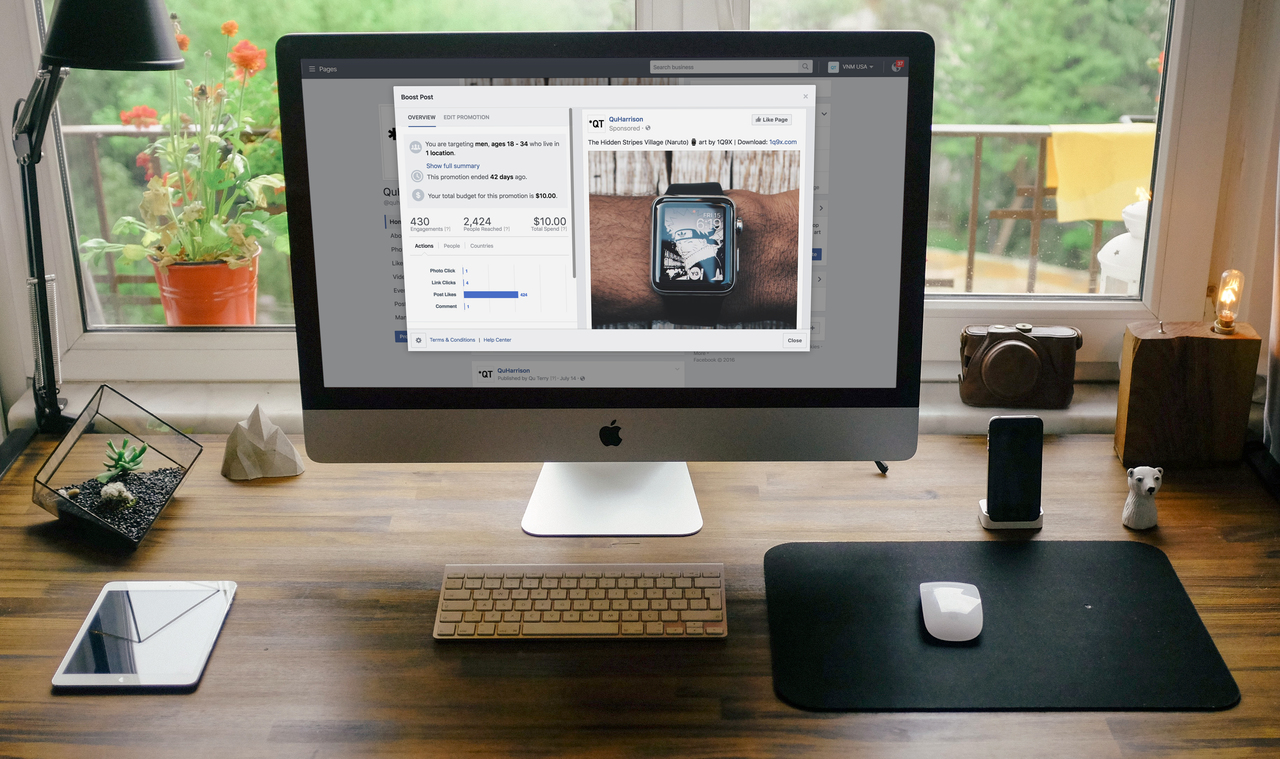
Carpe Diem. Seize the day (of Facebook Ads).
The term that captures the “Do-ers” and scares the “Don’t-ers”.
When I was (still am) learning sales I bought every book on the topic, trying to find that one secret that would turn me into a salesman extraordinaire. I didn’t find it. Needless to say, there wasn’t a switch I was missing and no matter how much I studied the craft, I wasn’t getting any better. I understood all the principles behind sales, but I just couldn’t close one to save my life or my company for that matter.
My business partner finally gave me the secret: Science.
Every great salesman there is today is a scientist. They hypothesize a new way to make a sale, go in the field to test it, analyze their results, tweak their process and repeat. Great salesmen are habitual learners. Everyday putting their schemes into action to perfect their craft.
Facebook Advertising is no different.
Many people look at social media as an extension of their business. “If I post enough stuff, the right people will find me and I’ll grow my brand.” That’s not the case. Especially since Facebook prioritizes family and friends way over businesses. The biggest reason Facebook allows businesses to be on Facebook is so that they’ll spend money on Facebook Ads.
Facebook is a must have for growing your brand, not an extension of your business that you can get to when you’re ready.
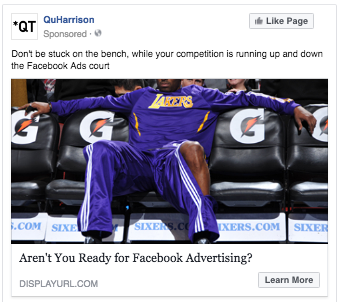
If your plan is to learn everything you can about Facebook Ads and then try it out, you will never take the leap because Facebook is always changing up their algorithm and adding new capabilities. I’ve been working with Facebook Ads for three years and I learn something new every time I go on the platform.
Facebook offers different advertising tools to cater exactly to your business needs, which I’ve outlined in this post.
My guess is that you aren’t utilizing Facebook Ads for one, if not all, of these reasons:
- You are too busy
- You’ve heard of someone losing a lot of money through FB Ads
- You don’t even know where to start, how to start, or what to get started on
If you are too busy, I’m sorry to hear that is your excuse. But you should always be able to find time to devote towards growing your business. Spend just 10-15 minutes a day creating ads, audiences, and campaigns, and at the end of two weeks, you’ll have a solid strategy to launch.
If you’ve heard of someone (or experienced) losing a lot of money through Facebook Ads, then I completely understand because I have lost a lot of money, and also profited a lot of money, from Facebook Ads. I suggest that you do low-cost testing in the beginning until you find the combination that works well and then increase your spending. We utilized this low-cost testing method to generate a 1,673% return on investment, which you can learn about here.
And if your excuse is that you just don’t know how…well I’m going to tell you everything I know about Facebook Ads throughout this article.
With all of this said I ask you, “Are you a Do-er or a Don’t-er?”
Intro to Facebook Ads
Blockbuster movies don’t launch without a plan. Billboards, TV commercials, interviews and massive social media campaigns are all in the budget.
Unless you are like Donald Trump where your inbound advertising strategy revolves around stating the most absurd, click-bait headlines to get free press you need to spend money on marketing.
How much is five dollars worth at Morton’s steakhouse? Nothing
How much is five dollars worth at McDonald’s? Whew…a full stomach
I say this not to tell you to get cheap with your advertising, but to be frugal and make sure you are using your money wisely because there are a lot of people out there ready to take your money on false promises.
Everyone is talking about influencer marketing. Getting your teeth whitening kit in Kim K’s hands or getting Lil Dicky to plug your company in his next rap song. And these are all great at the highest level, but I don’t have $50,000 to get one Instagram post from J-Lo.
So, where does that leave the rest of us small fishies? I’ll tell you what we are left with: Facebook Ads.
The Chicago Bulls had the third pick in the 1984 NBA Draft, and they got Michael Jordan. I’m very happy with our draft pick of Facebook Ads and you should be too.
This isn’t to say that Facebook Ads are a sure fire win, because you can easily get caught spending a lot of money on them with no return to show.
However, with the right mindset and a sound plan, you can reap the profits of Facebook Ads and see an enormous return on investment.
For that reason, I’m offering up some advice that we have learned through countless campaigns and tons of trials.
The Good and Bad of Facebook Ads
Lucky for you I’m not a sleazy salesman taking a percentage of all the traffic I send to Facebook Ads manager. As I would imagine Guy Kawasaki saying about me, “He’s simply a brand evangelist for Facebook Ads and wants to see more people utilizing the tool to their advantage.”
With that being said, I’d like to show you both sides of the argument and let you decide what’s best for you.
Pros of Facebook Ads:
- Easy-to-use campaign interface
- Instantaneous audience feedback
- Total control over your ad spend down to the penny
- Data presentation that your grandma can understand
- Easier to set-up and use than Google AdWords
- Insanely in-depth audience targeting tools
- Ability to reach your audience in any stage of the buying cycle
- Highly visual Ads that capture interest (images or videos)
- Straightforward cost-per-click / cost-per-conversion data to track success
Cons of Facebook Ads:
- Possibility of wasting money if not set-up properly or managed closely
- Not optimal for every business out there (B2B and businesses limited by location aren’t recommended)
- Can’t choose specific times or days to promote Ads
- Lose possible consumers if your copy, brand image or message is unappealing / misleading
- Advertising is filled with ambiguities and “what-ifs” (General Principle)
It’s a great opportunity. There are risks involved. But, the feeling you get when your campaign is running at $0.19 a click, reaching thousands of people, and you’re converting people you never would’ve reached before…well it’s indescribable.
Advertising is like cooking for your significant other. You can play it safe, make grilled-cheeses (SEO), and hope that you aren’t hated for it. Or you can take a bet on yourself and cook a succulent Filet Mignon (Facebook Ads) and shoot for the stars. You might bobby-flay your steak and have people begging for more…or you might donald-trump your steak and turn it into a rock.
With that in mind, the choice is yours.
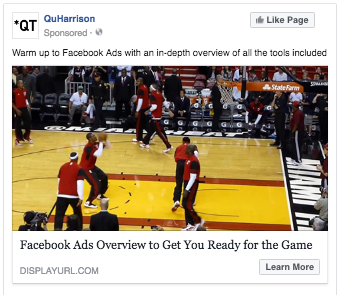
The 11 Types of Facebook Ads You Can Create
Variety is great when you are buying a house, hiring employees, or choosing the perfect flavor of ice cream. I think that’s why Baskin Robbins chose to always advertise their 31 flavors they offered.
But does variety hurt when you want to advertise?
Facebook knew that different companies had different tastes when they created their Ads Manager division, so they created the 11 flavors of Facebook Ads.
It’s easy to choose between the 31 flavors of ice cream. You just imagine yourself eating each flavor and voila, you’ve made your choice.
So for Facebook Ads you should be able to imagine your company tasting each flavor and make your choice, right? Kind of. Except this time you need to really boil down the purpose of your advertisements and understand what you are trying to accomplish. Each flavor of advertisement serves a different purpose. If you choose the wrong ad flavor for your company’s tastes, then you will end up asking someone to switch cones with you.
Here’s a list of the types of Facebook Ads available and each one is described in more detail later:
- Boost your posts
- Promote your Page
- Send people to your website
- Increase conversions on your website
- Get installs of your app
- Increase engagement in your app
- Reach people near your business
- Raise attendance at your event
- Get people to claim your offer
- Get video views
- Collect leads for your business
Facebook Ads #1: Boost your posts
Description:
The easiest way to describe boosting your posts is that you essentially are putting a megaphone in front of your mouth when you speak. As opposed to only being able to speak to the first three rows of the stadium, you can now talk to people all the way in the nosebleed section (that’s the highest part of a stadium in case you didn’t know, we’re talking row 55).
Benefit:
You’ll experience engagement on your posts(comments, likes, shares) and Page Likes through boosting your posts. This is recommended for those that want to grow their presence on Facebook and engage their existing and potential audience. It is advised to utilize intriguing content for this type of Ad and not focus on conversions(sales or email subscribes).
Use Case:
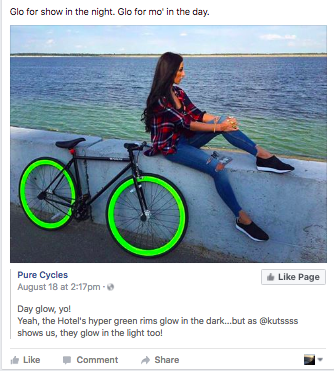
Facebook Ads #2: Promote your page
Description:
In high school the US Army would frequently come in during lunch hours, open up a table, and recruit teens. Along the same lines, Promoting your Page is a way for you to get on someone’s news-feed, get them to come over to your Page to learn more, and hopefully get them to engage with you.
Benefit:
It can be very useful to get more people to follow what you are doing, but has a few stipulations to make sure it’s done right. It’s suggested that you have a recognizable name or a really engaging advertisement to get this to be successful. It’s also very important to have a treasure trove of content on your page for people to check out if they decide to come over.
Use Case:
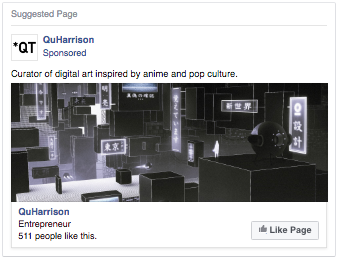
Facebook Ads #3: Send people to your website
Description:
When you are driving to a concert and are getting close to the venue, you begin seeing people waving you to remote parking lots. Ads that have a focus on sending people to your website are very similar in that your focus is to redirect interested parties to your site instead of going down their news-feed.
Benefit:
This is great if you have a lot of useful content and an easily navigable website that will solve a problem of your target audience. You can also specify the exact page you want them to land on, so make sure you are strategic and your messages are consistent. (Don’t include a headline in your ad saying that you are a news source for pregnant mothers and then send them to a page selling your yoga course.)
Use Case:
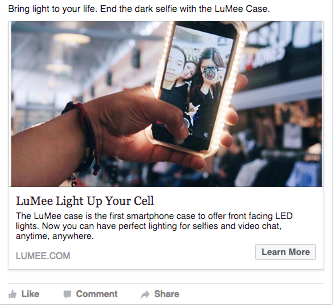
Facebook Ads #4: Increase Conversions on Your Website
Description:
Every Saturday I used to go to Costco with my mom for free samples. They were always strategic in giving out new foods or foods that they needed to sell more of. Ads focused on increasing conversions on your website is a great way to specify exactly what you want to sell / promote more of on your website.
Benefit:
This is a great way to retarget people that have visited your site before, whether they bought / signed-up for something or not. Don’t utilize this type of Ad for new audience members.
Use Case:
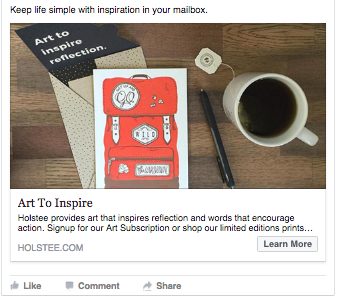
Facebook Ads #5: Get installs of your app
Description:
Ever had someone come up to you on the street and ask you sign a petition? Advertising for installs of your app is no different except that you are more targeted in who you are asking to install.
Benefit:
Get people in your target audience to install your app…it’s that simple.
Use Case:
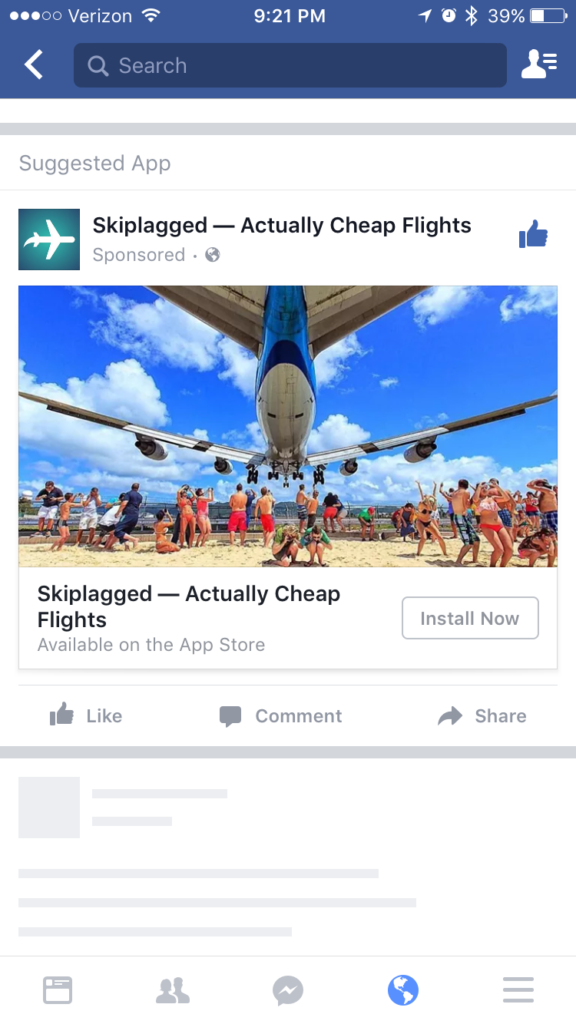
Facebook Ads #6: Increase engagement in your app
Description:
Exactly a year after you graduate from college, and every year following that, you begin getting letters from your college asking for a small donation. Increasing engagement in your app is very similar in that you are re-engaging people that already have your app.
Benefit: As previously stated it is very important to use this type of ad only to re-engage people that are currently using your app, but not to its full potential.
Use Case:
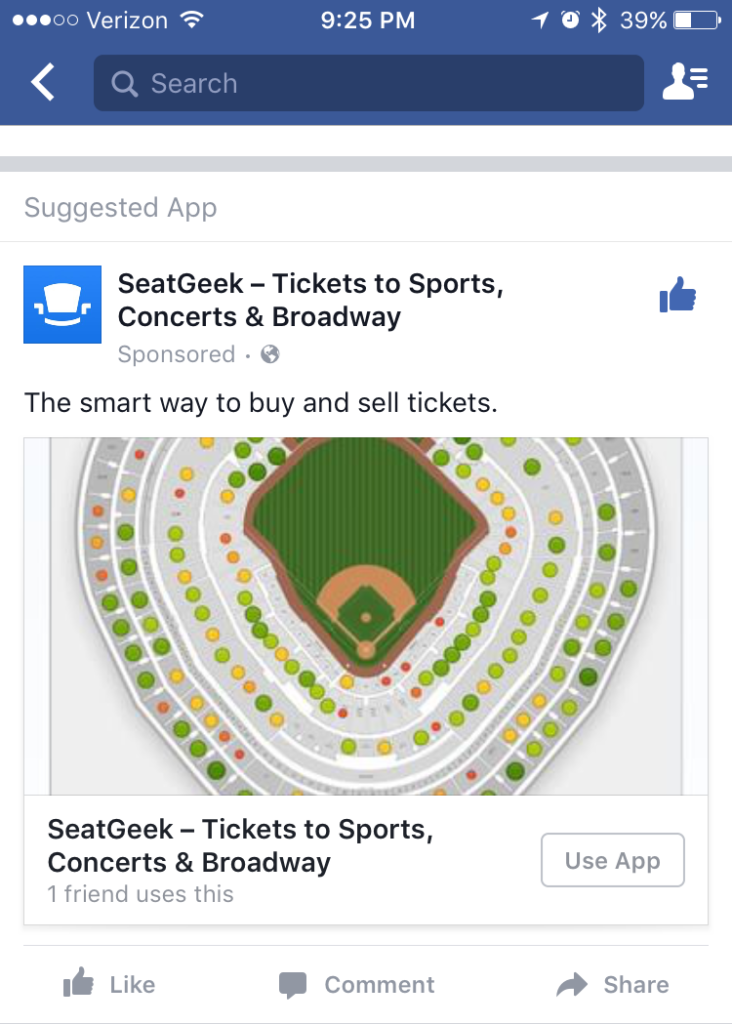
Facebook Ads #7: Reach people near your business
Description:
There was one location in my hometown that would shutdown and open up a new restaurant every few months. No one could ever keep up with what restaurant was there and would find themselves arriving to a chinese take out when they thought they were going to get ice cream cones. You only ever knew what was there if you drove by and saw the sign. This type of advertisement, reaching people near your business, is all about telling people your business exists.
Benefit:
This ad is great for businesses that recently opened up in large towns or small to mid-sized cities and want to make people aware of them. It is important to analyze the size of the audience that you can reach because you don’t want to waste money on a very small target audience.
Use Case:
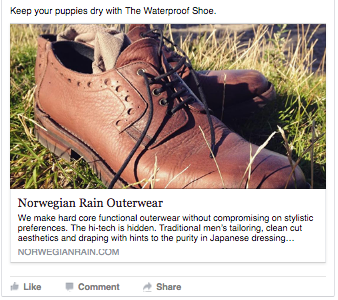
Facebook Ads #8: Raise attendance at your event
Description:
Downtown Madison has cylindrical advertising posts all over the city where people are allowed to put up their event flyers. I’ve never in my life seen anyone stop to look at the extremely cluttered signage. This type of ad is a clean way of virtually flyering your target area.
Benefit:
Great for events that have a very specific audience or area they want to reach. Should be utilized for awareness, not for selling (If you want to sell tickets to your event, then direct them to more information).
Use Case:
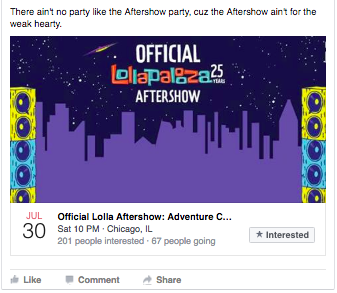
Facebook Ads #9: Get people to claim your offer
Description:
Every year I go to the Taste of Chicago, which is a citywide, restaurant-sampling extravaganza. The Chicago Tribune always has a table where they promote their newspaper with their “three-months of free news” offer. This type of ad, get people to claim your offer, is exactly the same in that you can advertise your business through a limited time or specialty offer.
Benefit:
This ad type is great for getting your foot in the door with potential customers or re-engaging old customers. These ads perform much better when the offer includes the word “free”. It is very important that your ad text is consistent with exactly what you are giving away.
Use Case:
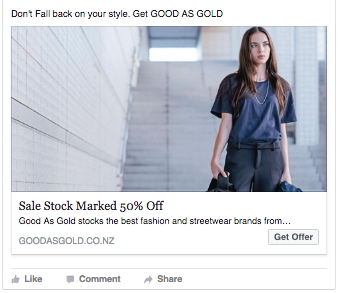
Facebook Ads #10: Get video views
Description:
A little while back a guy by the name of Tai Lopez took YouTube by storm with a video. He paid enormous amounts of money to have it show up as a paid ad before nearly every YouTube video. His goal was to direct people to his website from his outlandish claims. You can do the same thing by utilizing this type of ad. Not only can you get more video views, but you can also convert audience members.
Benefit:
I’d highly suggest using this ad to promote something because just getting more video views doesn’t mean much. So, direct them to a landing page or something of value, which you’ll describe in the video. Also, keep the videos very brief. Trust me, no one wants to watch a 15 minute video of you describing your business.
Use Case:
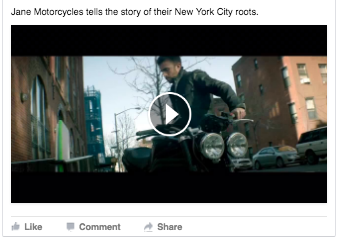
Facebook Ads #11: Collect leads for your business
Description:
The US Census asks for all types of information from you that ultimately feels irrelevant, but is very useful to them. The ad, collect leads for your business, feels like you are doing the same thing to people, except that you’ll find it useful, probably.
Benefit:
You can collect information from potential leads for your business right in the Facebook browser. Potential downfalls will arise here if your copy and images don’t really explain to the user why they should even be filling out a form for you.
Use Case:
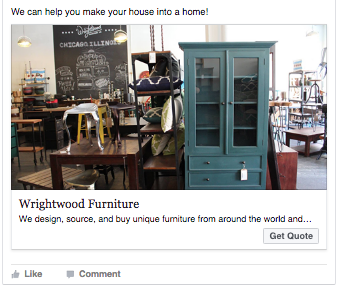
Now that you know all of your Facebook Ads choices, let’s take a look at creating an ad.
Creating Your Ad: Writing the Copy
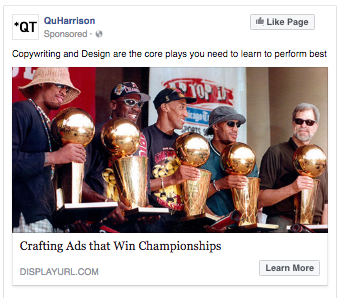
Advertisers will argue the Golden Age of advertising was either the 50s or 60s, and that they were unlike any other time and we’ll never have a better time advertising than back then. They’re right. But not in the way you are thinking.
The Golden Age was the best time for advertising because it was easy! People were on a spending high after the war and “things” were trending. When TV comes around it’s such a new invention that everything on TV is cool…especially the commercials. In fact, they were probably more engaging because you got to see a cowboy smoking cigarettes or a guy that looks just like your dad zooming by on speed boat.
Now more than ever, it is harder to get someone to buy what you are selling, or even get them to click on an ad to your website. We are in the Age of Choices. I can buy the same Power Rangers backpack from 19 different online stores.
On the other hand, we’ve never been able to get more targeted in who we are selling to than now. But with great power comes great responsibility.
Once you get the target audience right, you have to set yourself apart from the other 18 stores and that comes down to the ad you create.
There are three factors to creating a great ad: the copy, the image, and where they are directed.
You don’t necessarily have to create your ads in that above order. Whatever is most comfortable to you, and makes the most sense is how you should flow through the process. Over time you’ll develop a technique for creating these ads.
I always like to start with the copy because believe it or not people actually still read, and if you use some Jedi Mind Tricks (Psychology) you can actually get people interested.
There are three components to great copy and a great ad: Grabber, Action, Result.
These steps don’t necessarily always reveal themselves in that order and they don’t have to be in separate sentences. (Sidenote: you can accomplish one of these with the image, as well)
Factor 1: Grabber
You know those wacky-inflatable-flailing-arm-tube-men that are outside of car dealerships. Easily the best attention grabber of all time. You can’t not look at one of them.
While I wouldn’t suggest a grabber to that extreme because it brings a lot of unwanted traffic as well, but something along those lines is what you should aim for.
The whole purpose here is to get someone to stop and read, which is entirely dependent on what you are offering and who your audience is.
If you are selling one of those Power Ranger backpacks, then it might be: It’s morphin’ time! (the Power Ranger Tagline)
If you are selling email sales courses, you might try: 5 tips in 55 seconds that will make you $555 in your next email. (This one also covers the result phase)
Grabbers come in all shapes and sizes but they always accomplish one thing: they get you to stop and look.
A few tips for crafting your Grabber:
- Utilize numbers if it makes sense
- Only use a time component if you can boil it down to seconds…No one ever buys a book when you say, “How Steve Jobs got the idea for the iPhone in this 6.5-hour read.”
- Communicate the ease of what you are offering by capitalizing words such as: QUICK, SIMPLE, EASY, FREE.
- Exclamation Points!!! almost never fail to grab attention
To simplify this process and help you organize your campaign ideas as you move through this guide, let’s take a look at the “Facebook Ads playbook spreadsheet”:

Factor 2: Action
This is the most important part of your copy because it tells your interested audience what to do next. Without it, you are no better than the teacher who gives their students a massive paper assignment with the only direction of, “Write about your summer vacation.”
The CTA (Call To Action) should be very evident in your writing:
It may be as simple as one word, Download.
It may be two words, Click Here.
It might be a button on your ad, Learn More.
And if you are really confident that your ads sell, Buy Now.
No matter what your goals are with the Ad, make sure that it is clear what you are asking for and what they can expect if they click on the Ad. This consistency in message is very important and you’ll see it pop-up throughout this guide.
Factor 3: Result
Tangible vs. Intangible.
With your Ad, it should be apparent what you are giving away. Are they getting knowledge, are they getting an app, are they getting a subscription to a physical magazine, are they getting to buy a course…
I want to know what I get when I click on your shit. Excuse my language, but I see ads all the time where I have no clue what their purpose is. That’s called click-bait. Their whole goal is just to get you curious enough to click on something. Once you are on a new page they unleash the dogs on you and do their best to sell you on something completely different.
You might be familiar with, “This scientist won a Nobel Prize for combining a squid with a dog!” Or, “You won’t believe what happened when this guy ate 16,000 Chili Peppers in a year!”
Avoid making click-bait at all costs for two reasons. One, you are sending low-quality traffic that is unlikely to convert. Two, Facebook is cracking down on clickbait, so your Ads probably won’t even be approved.
All in all, the result phase is simple. Tell them if they are clicking to buy an ebook, sign up for a newsletter, or read an article. You don’t have to explicitly say it, but it should be apparent in your Ad.
A few copywriting tips
- Strong verbs over passive verbs: Get over Try, Learn over Read, Download over Check Out.
- Clear and Concise. You don’t have all day to get someone’s attention. See how few of words you can utilize to get your point across.
- Stand out in your verbiage. Make bold claims(that you can back up)
- Use appealing words that are fun to say like: rambunctious, sleazy, visceral.
Creating Your Ad: Choosing An Image
The image can be utilized in so many different capacities and is really just an extension of your copy. Think of it as Indiana Jones’s whip. He has a lot of great moves that can get him by, but when he takes that sucker out, you know he means business.
Ultimately there are a two things that you need to keep in mind when inputting your image: Aesthetic Appeal and Engaging.
Factor 1: Aesthetic Appeal
You know the difference between an image that looks good versus one that doesn’t. Let your eyes do the talking here.
Keep it simple and don’t be afraid to use an image that stands out from the rest.
Factor 2: Engaging
Just like your ad copy, you want to make sure that your picture is interesting in the sense that people will either look at it and understand exactly what you are trying to get across, or they are so amazed that they can stare at it for an extended period of time.
The biggest factor is that your image should convey emotion. It doesn’t have to be a Picasso and evoke discussions, but it should have a purpose. For example, if your company focuses on selling trips around the world, use an image that makes someone feel adventurous with a picture of someone hiking a mountain in Jamaica. If your company sells calendar tools that integrate with your email, then use an image that conveys organization.
Your image should add something new to the appeal of your ad. It should be an extension, an add-on.
With that being said, you need to make sure that your image is still in-line with your argument from your copy, so you want to make sure that you are consistent without too much reiteration.
How do you do this? Easy. Just think about your audience and what interests them.
A few image tips
- Utilize videos or carousel images if you have a larger point to get across.
- Avoid text on your images at all costs. Facebook limits it to 20% and even at 20% they won’t optimize your ads as much.
- Relevant image topics to the time of year. If the Academy Awards are coming up, use a picture of an Oscar trophy and craft copy accordingly, “The Oscar for best sales strategy goes to…”
- Pictures of a friendly person looking directly at your audience will trick people into thinking it is a post from a friend and stay for a minute.
Creating Your Ad: Where To Send Ad Traffic
You’re at the grocery store going up and down the same aisles over and over because you can’t find the damn taco seasoning. Finally, you put your pride aside and ask someone to show you where it is. The clerk makes a harsh mistake and takes you to the produce section.
“Here’s the lettuce, over there is the jalapeno, there’s the tomato, which you’ll need for your tacos,” he says.
You are a little pissed. Then he takes you over to the refried beans aisle. And finally points you in the direction of the taco shells. “And if you look right up there, you’ll see the taco seasoning.”
He made a big mistake in assuming what else you needed for tacos, since you wanted taco seasoning. Don’t make this mistake when you are making ads.
People don’t know the totality of your business and all the tools you offer in a given area. All they know is that your ad popped up about wedding planning, and damnit they want to see what you offer for wedding planning.
You must be very careful in where you direct your traffic from your ad to make sure that the tone and message is consistent throughout the process. As I stated before, you might get 100 people to click on your click-bait ad that don’t give a crap about what you are selling. Or you can get 4 very warm leads from an honest ad that turn into sales.
The worst thing you can possibly do is get someone interested in your article, “How I managed to close 5 clients a day for 3 years with one email,” and then send them to the purchase page for the course you created. You can sell them, but do it in the article.
Don’t overthink this part too much.
It is a great idea to set-up funnels for leads to go through once they hit your page, but make sure you get them what they want first.
Now that you have your killer ad ideas in place, let’s determine who is going to see your stuff.
Audience Targeting: Creating a Regular Audience
Defense wins championships. Fresh ingredients make delicious meals. Clothes make the man. There are a lot of pieces to the puzzle that is creating a successful Facebook Ad campaign, but without the proper target audience profile, you are dead in the water. No matter how amazing your copy is or how big of a name you have, if you don’t put your ads in front of the right people, then all that work is for nothing.
You wouldn’t speed during your driver’s ed test, so don’t speed through the process of making your target audience profile. And these are equally defining moments in a person’s life, lol.
Essentially you can create a Regular Audience or a Custom Audience. The difference here is either starting from scratch and building an ideal profile with a Regular Audience, or utilizing existing data you have to create a Custom Audience.
When crafting a Regular Audience, start with your ideal customer. Compare that to your actual customers, see where the overlap is, and keep those parts. Then think deeply about why you are missing certain target points. Perhaps your visuals and copy don’t actually speak to that demographic, so cut them out of your audience.
Once you have a basic understanding of who in your ideal customer segment is actually engaging, your goal is to find every last person like the engaged customers with the target audience profile you create.
You want to encapsulate all those people with the various targeting variables you input: location, age, gender, language, behaviors, demographics, interests, and connections. Some of these are more important than others and should take more thought, such as interests and behaviors.
To make this super simple for you, you should be able to answer these questions about your audience:
- Gender
- Age
- Location
- Ethnicity
- Education level
- Interests
- Hobbies
- Passions
- Personality
- Income level
- Industry/job
- Types of blogs he/she is likely to read
- Which social networks is this person likely to use?
- Which magazines does he/she read?
- What would make this person trust a new source/blog/brand?
Once you have all of those questions answered you can input all of that information into the audience interface and create your ad.
Audience Targeting: Creating a Custom Audience
If you already have a list of customers’ phone numbers or email addresses, then there’s really no need to create a Regular Audience from scratch. Instead, you can build a Custom Audience by inputting your existing customer data (emails or phone numbers) right into Facebook, which will find those exact people if they have a Facebook account. It’s some next level stuff, I know.
But, Facebook even takes it one step further with Lookalike Audiences.
You know that scene in The Matrix Reloaded when Neo is fighting Mr. Smith (I know it happens a lot), but specifically they are in the courtyard and dozens of cloned Mr. Smiths continue appearing?
Well believe it or not, Facebook allows you to clone audiences all on your own. I know, amazing right?!
You input their email or phone numbers and Facebook will clone those people for you. I guess clone is the wrong word here. They find people that could be clones based around similar demographical information, interests, etc…
There are a lot of different ways to create Custom Audiences, so I’ll run you through some of the best.
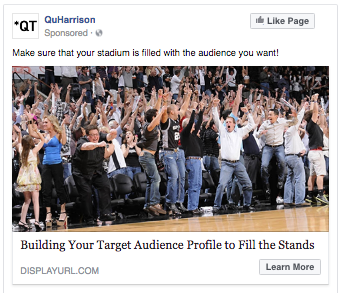
When the Rubik’s Cube came out and captured the world’s attention, there was one guiding principle that made everyone so keen on it: it was believed to be impossible to solve. With millions, if not trillions of combinations to move the faces it seemed to be a statistical impossibility.
Then someone solved it.
And that gave everyone else the confidence in knowing that it was possible, including Chris Gardner in The Pursuit of Happyness.
Today, there are a number of simple movement formulas that anyone can memorize to solve it in under a couple of minutes.
To the first-time user, creating targeted Facebook Audiences is just as daunting as solving a Rubik’s Cube. But not to worry, as we have put in all the leg-work to present to you some simple formulas that you can memorize to solve your Rubik’s Cube.
You’ll need to assess your situation to see which of these following tactics works best for your situation. I encourage you try out a few during testing periods to see which audience engages the most.
General Tactics
- Custom Audience From Your Website
- Custom Audience From Your Email List
- Custom Audience From Facebook Fans
- Custom Audience From Advanced Interest and Behavioral Targeting
Custom Audiences from Your Website
Have you ever had that very odd moment where you are on a company’s website, only to later go on Facebook and be prompted with an ad from them? It’s not a higher power telling you to buy something from them. They are just creating custom audiences from their website.
This tool allows you to retarget people that have already visited your website. By creating this audience you can prompt warm leads to revisit your site.
In order to create this audience, you must first install a Facebook Pixel so that you can begin collecting data from your site’s visitors.
With this audience set up, you can then create your ad. I would highly suggest that you don’t use a generic ad that you would use to drive new traffic to your site. Instead, this ad should be interesting enough to get someone to come back. You might consider directing them back to a paid product with a special offer for 50% off, or something along those lines.
Be sure to understand your analytics before creating this audience too. If the people that are coming to your site are only staying for 10 seconds, then they probably aren’t going to be people that will want to come back. Try analyzing specific pages to get the best audience to retarget, which is described in the next section.
Specific web sections vs. all website visitors
When building a custom audience from your website it is important to retarget the correct segment of your audience.
You can install your Facebook Pixel on specific pages of your site to build out a focused custom audience. Understanding the data across your entire site is important for building your custom audience because different pages will attract a different audience, for difference reasons.
You want to optimize your ad targeting to the group that is most likely to come back to your site when prompted.
Custom Audiences from Your Email List
If you already have a newsletter or mailing list that you are active on and have an audience there that cares, then you are in a good spot. Facebook allows you to input all the emails you have from your list into their system and they will find all the people that have Facebook profiles.
You can then create retargeting ads to that group of people, so that you can begin engaging with them again. This is very helpful if you have a sizable list to work with because many of those emails may not be attached to a Facebook profile.
Segmenting your email list
If you aren’t confident in retargeting all of your email subscribers, or feel that some may be a waste of time, you can create filters that will narrow down that audience.
The stipulation here is that you can only create filters out of other data you have collected on those emails.
For instance, if you are selling a product to your email list through Facebook Ads, but don’t want to send an ad to someone that has already bought it, you can segment that list to only people that haven’t bought the product(As long as you can connect buyers to their emails).
Custom Audience from Facebook Fans
Building a target audience around your Fans is a great way to re-engage people that at one point began following your brand, but may have dropped off recently. Essentially you are targeting an audience comprised of all the people who Like your Facebook Page.
Unless you have great engagement on all of your posts, most likely your content isn’t reaching your audience, so you have to pay to reach your audience. I would suggest this type of audience for those with a lot of Likes on their Facebook Page, but little engagement.
Custom Audience from Advanced Interest and Behavioral Targeting
If you happen to know a lot about your audience then this is the audience you should focus on building. It revolves around the individual’s preferences and lifestyle, which is scary that Facebook knows so much, but can yield great results.
Interests would include activities they are interested in, magazines or news sources they use, things they share on their Timeline, apps they use, ads they click, Pages they like, among many other things.
If you are struggling to build this out and have no present audience, go to the Page of someone that is doing exactly what you wish to do. Create a spreadsheet of 50 people that follow them, individually looking at each person’s profile, and taking note of all the Pages they like. The most common 5-8 will give you a good start on your audience profile.
Behaviors include anything that inform you of their device usage, purchase behaviors or intents, travel preferences and more. Behaviors are constructed from both someone’s activity on Facebook and through offline activity provided by data from Facebook’s trusted third-party partners Acxiom, Datalogix, and Epsilon.
Examples of behaviors would be whether they are iPhone or Android users, Mac or PC users, the country they last traveled to or visited, among many other things.
Audience Targeting: Creating a Lookalike Audience
If you feel like you’ve exhausted your current audience for all they are worth and probably don’t want to hear from you anymore, don’t worry, you can build a lookalike audience. By creating any of the audiences above, Facebook will be able to analyze your current audience, create a profile of them, and then develop a Lookalike Audience.
This is essentially an audience that looks just like your current audience except it is much larger and a whole new group of people.
I would recommend building a Lookalike Audience if you are very confident in your current audience and now are ready to multiply and scale them. Definitely don’t build a Lookalike Audience from an email list that has very low engagement.
Layering Your Lookalike Audience with Interests and Behaviors
This is exactly what it sounds like. You can take a Lookalike Audience and take it to the next level by adding interests and behavioral information.
For example, let’s say my email list subscribers are used to buying my online courses on entrepreneurship, and now I’m selling / advertising an online course for building and utilizing an email list.
I can create a Lookalike Audience from that email list, since I know they will be predisposed to entrepreneur-friendly courses, and then add on an interest tag for MailChimp. This will add a new layer of people that are already interested in email marketing and fit the profile of my Lookalike Audience.

